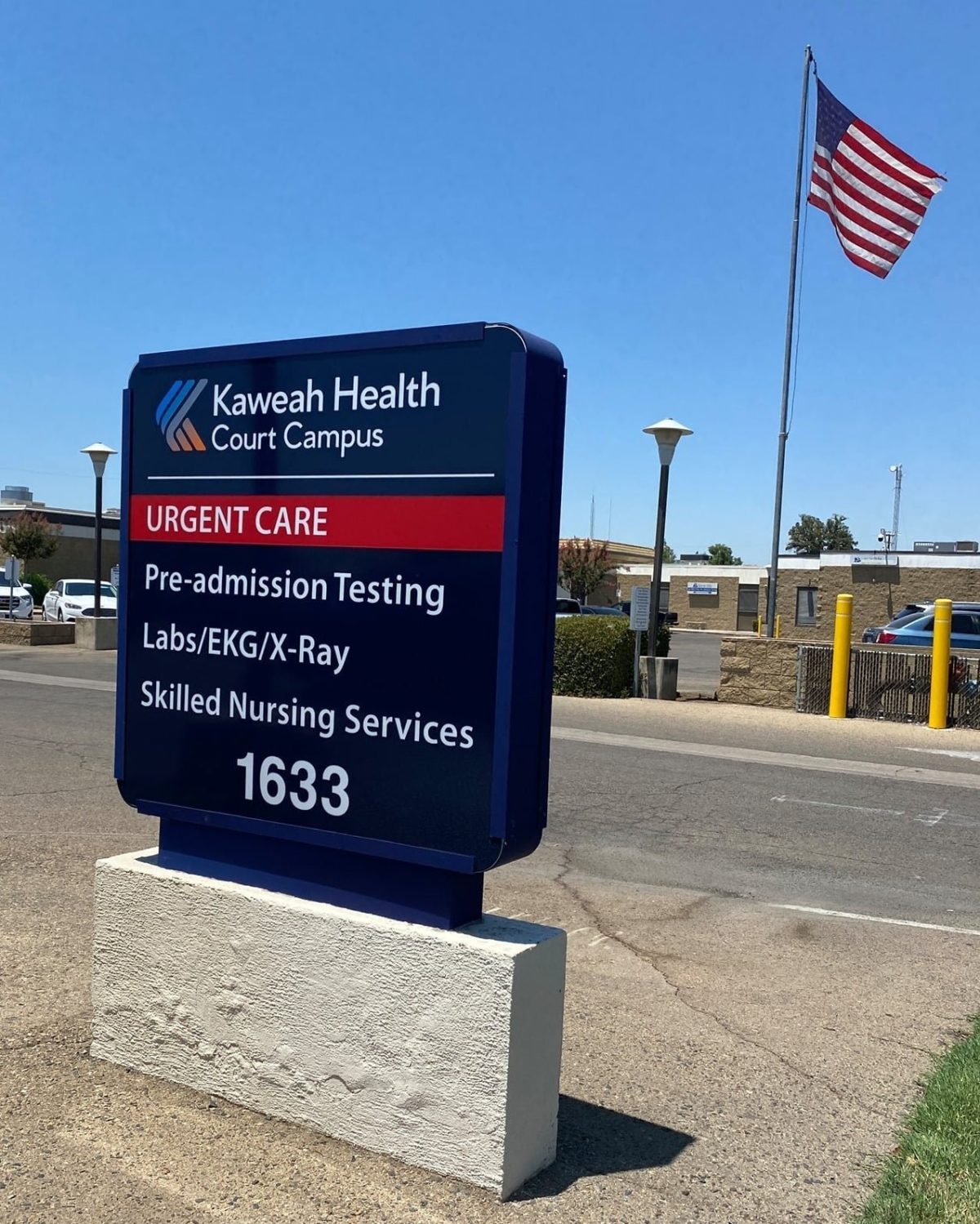
Without urgent assistance from the State of California, Kaweah Delta Health Care District may be forced into layoffs, department closures and possibly stop operating altogether. Kaweah Health photo
Written by Alex Scott
The COVID-19 pandemic has left hospitals across the country in financial disarray, and the Central Valley is no exception.
Kaweah Delta Health Care District (“Kaweah Health”), a political subdivision of the State of California, and the largest of the 33 district hospitals still operating, is one of the many health care facilities in the Central Valley experiencing financial hardship in the post-pandemic world.
Despite being an incredibly busy hospital — seeing 81,000 patients in the ER, more than 112,000 in urgent care, over 124,000 in clinics, delivering more than 4,500 babies and performing almost 10,000 surgeries — the pandemic has been financially devastating for the hospital and health system that serves close to 600,000 people.
Since 2020, Kaweah Health has sustained a cumulative operating loss of $127 million, offset in part by federal Provider Relief Funds of $61 million. It lost $29 million from operations in the first three months of the fiscal year.
In a letter to Gov. Gavin Newsom (see opinion page), CEO of Kaweah Health District Gary Herbst asks for financial assistance in light of layoffs and the closing of services due to financial repercussions caused by the pandemic.
“Sadly, with virtually no hope for further COVID relief funds from either the federal or State government, we are faced with no choice but to begin laying off staff, closing services, stopping elective surgeries and procedures that are provided at a loss, and taking any and all other steps necessary to stem our losses,” Herbst wrote. “It is gut-wrenching and agonizing to say the least.”
As a result, Kaweah Health currently has 240 traveler nurses and 500 employee vacancies. Due to layoffs, the hospital was forced to rely on highly expensive contract labor to fill the hundreds of vacancies, totaling nearly $81 million spent since March 2020.
He asks Governor Newsom to remember the doctors, nurses and care providers who he describes as “good soldiers”, and dedicate one-time funding to help assist district hospitals in their financial recovery efforts.
“They have provided heroic, selfless care to their communities, but they are now suffering deeply and need your help,” Herbst wrote.
Herbst also requests that the governor reform Medi-Cal reimbursement so that hospital care facilities can avoid disparities in the care of the poorest Californians.
“Without your help, soon it will be virtually impossible for Medi-Cal patients to receive anything but emergency medical care in the State of California,” Herbst wrote.
Kaweah Health is not the only hospital facility in need of financial assistance from the state. In September, Madera Community Hospital received $5 million from the state, which was secured by Sen. Anna M. Caballero and Assemblymember Frank Bigelow.
Madera Community Hospital faced a shortage of health care workers and was at risk of closing its doors.
Generating more than 80% of its revenue from Medi-Cal, Medicare and similar programs, closure of Madera Community Hospital would have left close to 100,000 people without direct hospital care.
On top of labor shortages and depleted cash reserves, hospitals are also feeling the effect of inflation. With some of the highest inflation rates ever seen, the skyrocketing cost of drugs, supplies, food, energy and every other resource that goes into taking care of a patient is becoming harder to supply.
“Kaweah Health has witnessed our cash reserves plummet from 130 days cash on hand at the start of the pandemic to just 84 days cash on hand,” wrote Herbst. “We will soon be in default on over $200 million in revenue bond debt, far from our pre-pandemic position as one of the financially-strongest hospitals in the Valley with a credit rating of A3 from Moody’s Investors Service.”
As a result of this financial crisis, Kaweah is unable to achieve the State’s mandated seismic compliance by the end of 2030 and does not have the funds to build the $730 million, 10-story patient tower. This tower would replace over 200 non-compliant acute care inpatient beds, surgical suites, the pharmacy, cafeteria and the Post Anesthesia Care Unit. Despite the building being located in one of the lowest seismic-risk areas in the State, the hospital has been granted no relief from the requirements of SB1953; a law that requires hospitals must be capable of surviving and providing care after an earthquake by January 1, 2030.
Without an exemption or any significant modification to the law, the hospital will be forced to close even more of its beds and services.
It is feared that without support from the state more hospitals like Kaweah Health will financially collapse and have no choice but to lay off hundreds of workers and be forced to close their doors.








